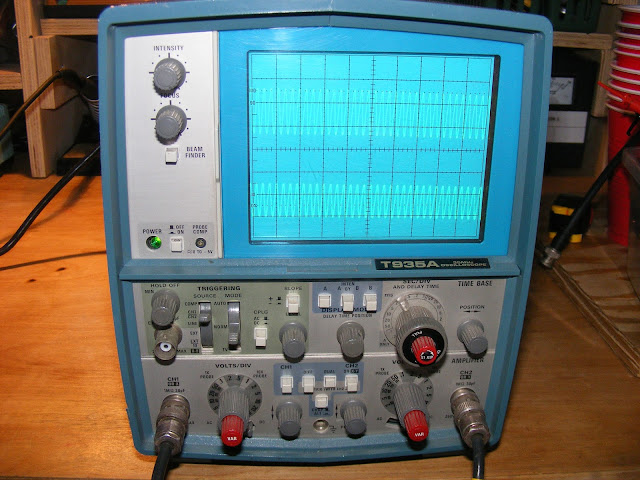The first is by Dave Jones over at EEVBLOG:
..and the second is by M. J. Lorton:
So, a caveat and then my complaint: I am a complete ninny when it comes to electronics and these two gentlemen can run rings around me in terms of knowledge and experience. That said, both are off-putting because they do not construct too many videos that help the average twit like myself. In fact these two are nothing more than 45-minute brag tapes about how Dave Jones scored his voltage reference for a song from some poor, unsuspecting clod at an Aussie swap. Don't even get me started on Lorton who manages almost one hour lisping his way through minute-by-minute temperature changes in his workshop. (And this is the last of six similar videos on the subject. Get. A. Life.)
Paint, drying, etc.
So, that's this got to do with anything? Well, I scored an HP 3468A off eBay for a modest price and was looking forward to incorporating it onto the bench as a reference because it was more accurate than all of my other instruments. Or, as Juvenal once famously said:
Quis custodiet ipsos custodes?
In doing research on my scored treasure I cottoned to the fact that this unit uses parameters stored in CMOS memory to effect its accuracy. Basically, the instrument measures what it measures and then offsets or digital differentials are applied to the measurements to show up on the display. Again, these are stored in CMOS memory circa 1980s and that was volatile. If it lost power, the RAM contents vanished. In order to retain the memory, HP designed a 3V Lithium battery backup that lasted about 10 years.
Well, that's all well and good an idjits like myself open their treasures up, slap a DMM on the backup battery, read 3.12V and think all is well. Sadly, a Lithium battery has a life profile that looks like a ball rolling off a table. After ten years, you're living on borrowed time.
(This was the deal with my old Icom IC-745. When it lost its mind, Mother Icom had you by the short hairs to reprogram the radio. Fortunately, the Piexx folks came along with their non-volatile RAM and saved the day.)
So, casting about, I found a tremendous gentleman -- Mr Modem Head -- who did a treatise on restoring a 3468A and replacing the CMOS backup battery. Fearing a day of reckoning, I studied both posts assiduously, got a replacement battery form DigiKey, and last Sunday afternoon I did the surgery.
Well, the operation was a success but the patient died! When I powered the unit up after the solder cooled, up came the infamous ERROR 1 message on start-up:
I swear by all that is holy, the backup battery was strapped with 3.25V at all times. I followed the procedure to the letter. But, alas, I crapped out, rolled snake eyes, busted, came up with three peach pits, etc. So now my treasure was only as good as the other DMMs I had lying around and I was off searching for how to calibrate it myself using a Voltage Standard DMM Check, the HP service manual, and my wits.
..well, the DMM Check and service manual at any rate.
By the way, Mr Modem Head's blog is everything that Wanker and Motor-Mouth Jones is not. It is artfully done, contains useful information; true wit and wisdom. Sadly, current events (life, responsibilities, etc.) conspire to keep Mr Modem Head from to many recent posts but he is a roll-up-your-sleeves electronics hobbyist who shares his project efforts in a stunningly beautiful style superbly laid out on his blog. (See links above.)
..all for the common man without benefit of $20,000 instruments or being knee-deep in prime Fluke or HP surplus.
Anyway, the outfall here is that a calibration shop was located who would redo the parms for $65 and my HP is headed for Medford, Oregon as we speak. I will keep you apprised.
-30-















